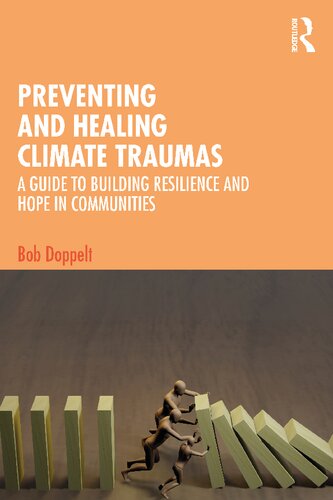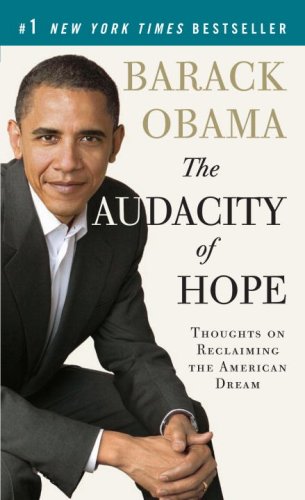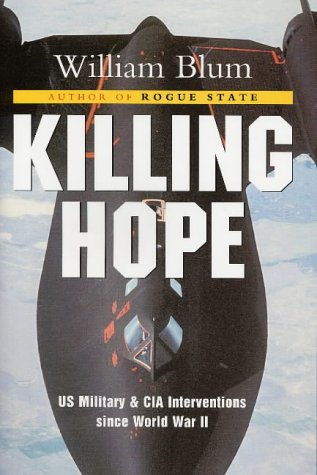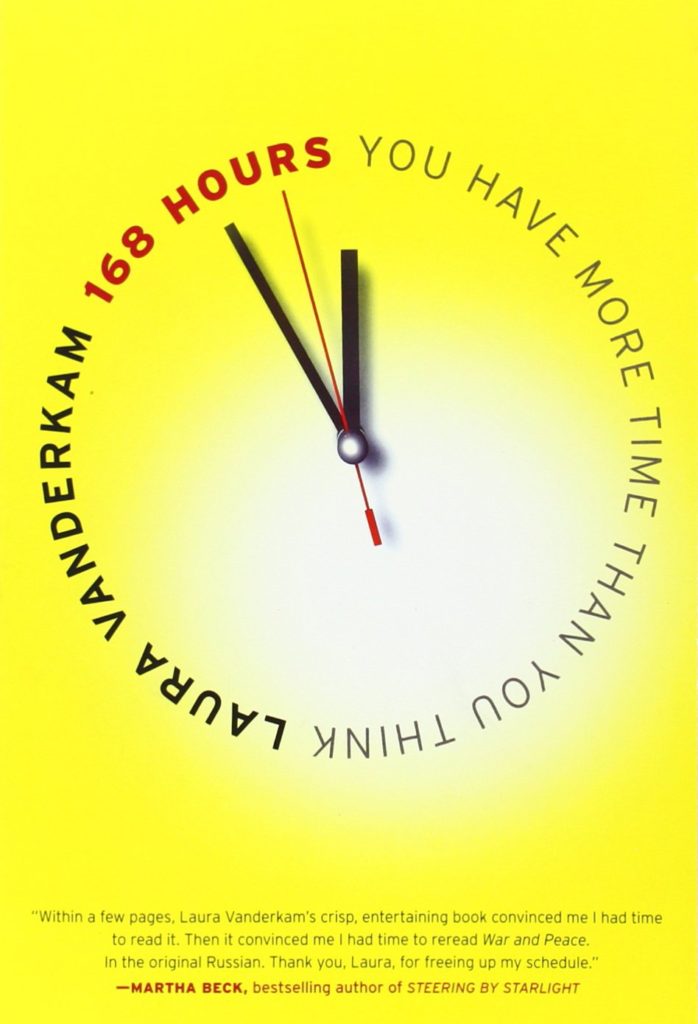موضوعات
آموزش و پرورش
ادبیات و زبان
پزشکی، دندانپزشکی و داروسازی
تاریخ و جغرافیا
داستان و رمان
دیگر
دین و فلسفه
روانشناسی
ریاضیات و آمار
سلامتی، تناسب اندام و رژیم غذایی
شیمی و پلیمر
علوم اجتماعی و حقوق
علوم زیستی و بیوتکنولوژی
فیزیک و نجوم
کامپیوتر و اینترنت
کتابهای کودکان و داستان
کسب و کار و اقتصاد
کشاورزی و دامپزشکی و غذا
معماری
مهندسی و فناوری
هنر و تئاتر
محصولات
Lavender Fields: Black Women Experiencing Fear, Agency, and Hope in the Time of COVID-19 - Original PDF
نویسندگان: خلاصه: I start this book on African/Black women’s testimonies of living with COVID-19 by situating myself and my role in it. Over my twenty-plus years as an academician, I have evolved. I started simply wanting to be a political scientist who focused on Black women and public policy. I saw my work as an extension of me, but not in the way I do at this stage of my career. There was a shift in my approach to being an academician at some point. I started journaling about being a storyteller of Black women’s stories. Research, what I had been trained in, took a back seat, and the notion of storytell- ing became more prominent. I cannot explain this shift, and I have learned that some things need not be explained over time. Sometimes, Black women simply know (see Hill Collins 2000). Then COVID-19 hit. At some point during shelter in place—I have lost count of how long I have been at home—the Black feminine ancestors whispered to me. They called on me to undertake this project on Black women and COVID-19. I resisted. The project felt too big for me. I was worried that I could not do it and do it well. I went out into my garden. The energy of the ancestors deepened, and the call seemed to wrap itself around me in a way that would not release me. I did not feel threatened. But I resisted. I stayed in my gar- den for hours in my efforts to resist—weeding, tending, and avoiding. Finally, the heat of the day caught up to me, and I slowly made my way inside. I needed to find something else to occupy my mind, something that allowed me to continue avoiding the call for this projectOur Hopes, Our Future: Insights from the Hope Barometer - Original PDF
نویسندگان: خلاصه: The results of the Hope Barometer for the years 2019 and 2020 sketch a rather dark future full of crises and show the psychological consequences of such sce- narios. If we as individuals and as a society are to flourish, we need images of a hopeful world that will promote our commitment and cohesion. But what does it take to ignite the flame of hope for a livable future together without a naive optimism trivializing and playing down the current problems? Hope contains the belief in a better world but also the recognition of obstacles and the moti- vation to act. This book presents the phenomenon of hope in connection with individual psychological findings and socially relevant developments. After the psychological basics of future thinking, the general expectations and wishes for the future of around 10,000 people from fourteen countries are presented. The experiences of the Corona pandemic give hope because they show how people can deal successfully with crises. This results in the importance and character of individual and social hope.Preventing and Healing Climate Traumas: A Guide to Building Resilience and Hope in Communities - Original PDF
نویسندگان: خلاصه: Acknowledgments ix About the Author xi Introduction 1 Part I A Public Health Approach is Required to Build Population-Level Capacity for Mental Wellness and Transformational Resilience for the Long Climate Emergency 17 1 Climate Overshoot “101” 19 2 The Causes and Consequences of Individual, Community, and Societal Traumas 36 3 Elements of a Public Health Approach to Enhancing Mental Wellness and Transformational Resilience for the Long Climate Emergency 54 Part II Organizing and Operating Community-Based Initiatives that Build Universal Capacity for Mental Wellness and Transformational Resilience 73 4 Get Organized 77 5 Begin Building Community Capacity for Mental Wellness and Transformational Resilience 100 6 Establish RCC Goals, Objectives, Strategies, and Action Plans 116 Part III The Five Foundational Areas RCCs Must Emphasize to Enhance Universal Mental Wellness and Transformational Resilience for the Climate Emergency 127 7 Build Social Connections across Boundaries in the Community 129 8 Ensure a Just Transition by Creating Healthy, Safe, Just, and Equitable Climate-Resilient Local Physical/ Built, Economic, and Ecological Conditions 147 9 Cultivate Universal Literacy about Mental Wellness and Resilience 170 10 Foster Engagement in Specific Practices that Support Mental Wellness and Resilience 183 CONTENTS x Contents 11 Establish Ongoing Opportunities for Residents to Heal Their Distresses and Traumas 203 12 Continually Track Progress, Learn, Improve, and Plan for the Long Term 215 Conclusion: The Need for a Global Movement to Enhance Universal Capacity for Mental Wellness and Transformational Resilience for the Civilization-Altering Climate Emergency 228 Index 235When the Diagnosis Is Multiple Sclerosis: Help, Hope, and Insights from an Affected Physician - Original PDF
نویسندگان: خلاصه: THE NAME , “MULTIPLE SCLEROSIS ” I have a very hard time with the name of this illness—“multiple sclerosis.” It has such a horrific sound to it. Even after seven years, I rarely say the words multiple sclerosis aloud. I much prefer the more appealing sound of MS. In speaking to others with multiple sclerosis (MS), I have learned that I am not alone with this preference. At the time I was diagnosed, I was somewhat familiar with this illness, hav- ing intermittently cared for multiple sclerosis patients in the hospital. Most of the patients I had seen were diagnosed with MS in the 1970s or 1980s, a time when medication for relapse prevention was not yet available. Others, who were frequently in the hospital, had a variant of MS called “primary progressive multiple sclerosis,” which can lead to significant disability fairly quickly. As a physician, I thought their situations were so very sad, as many patients had developed poor functioning of their arms, legs, bladder, or speech. I rarely had the opportunity to see the MS patients who had very little disability, since they were seen in the outpatient setting. So when I finally had it con- firmed, that yes, these bizarre symptoms I had been having were in fact due to multiple sclerosis, I conjured up the worst possible images of what might happen to me. While many of you may not have had the opportunity to meet patients with more advanced stages of MS, I suspect that your reaction to the diagnosis of MS may have been quite similar to mine. Many people still carry an image of multiple sclerosis as an illness that picks an individual out of the prime of his or her life, and leaves that person wheelchair bound and severely disabled. Fortunately, for the majority of women and men who are newly diagnosed with relapsing–remitting MS in the new millennium, this is not an inevitable outcome. And yet, while we know that medications now exist to prevent relapses, this knowledge does not necessarily make the initial journey any 2 When the Diagnosis Is Multiple Sclerosis easier. We did not sign up for this club. We did not ask to play this game. The anger, the grief, and the uncertainty about the future can be overwhelming. Give yourself time. It will be possible to feel in control again.The Audacity of Hope. Thoughts on Reclaiming the American Dream - Original PDF
نویسندگان: خلاصه: Republicans and Democrats ON MOST DAYS, I enter the Capitol through the basement. A small subway train carries me from the Hart Building, where my office is located, through an underground tunnel lined with the flags and seals of the fifty states. The train creaks to a halt and I make my way, past bustling staffers, maintenance crews, and the occasional tour group, to the bank of old elevators that takes me to the second floor. Stepping off, I weave around the swarm of press that normally gathers there, say hello to the Capitol Police, and enter, through a stately set of double doors, onto the floor of the U.S. Senate. The Senate chamber is not the most beautiful space in the Capitol, but it is imposing nonetheless. The dun-colored walls are set off by panels of blue damask and columns of finely veined marble. Overhead, the ceiling forms a creamy white oval, with an American eagle etched in its center. Above the visitors’ gallery, the busts of the nation’s first twenty vice presidents sit in solemn repose. And in gentle steps, one hundred mahogany desks rise from the well of the Senate in four horseshoe-shaped rows. Some of these desks date back to 1819, and atop each desk is a tidy receptacle for inkwells and quills. Open the drawer of any desk, and you will find within the names of the senators who once used it—Taft and Long, Stennis and Kennedy—scratched or penned in the senator’s own hand. Sometimes, standing there in the chamber, I can imagine Paul Douglas or Hubert Humphrey at one of these desks, urging yet again the adoption of civil rights legislation; or Joe McCarthy, a few desks over, thumbing through lists, preparing to name names; or LBJ prowling the aisles, grabbing lapels and gathering votes. Sometimes I will wander over to the desk where Daniel Webster once sat and imagine him rising before the packed gallery and his colleagues, his eyes blazing as he thunderously defends the Union against the forces of secession. But these moments fade quickly. Except for the few minutes that it takes to vote, my colleagues and I don’t spend much time on the Senate floor. Most of the decisions— about what bills to call and when to call them, about how amendments will be handled and how uncooperative senators will be made to cooperate—have been worked out well in advance by the majority leader, the relevant committee chairman, their staffs, and (depending on the degree of controversy involved and the magnanimity of the Republican handling the bill) their Democratic counterparts. By the time we reach the floor and the clerk starts calling the roll, each of the senators will have determined—in consultation with his or her staff, caucus leader, preferred lobbyists, interest groups, constituent mail, and ideological leanings—just how to position himself on the issue. It makes for an efficient process, which is much appreciated by the members, who are juggling twelve- or thirteen-hour schedules and want to get back to their offices to meet constituents or return phone calls, to a nearby hotel to cultivate donors, or to the television studio for a live interview. If you stick around, though, you may see one lone senator standing at his desk after the others have left, seeking recognition to deliver a statement on the floor. It may be an explanation of a bill he’s introducing, or it may be a broader commentary on some unmet national challenge. The speaker’s voice may flareRip by XmosRips with passion; his arguments—about cuts to programs for the poor, or obstructionism on judicial appointments, or the need for energy independence—may be soundly constructed. But the speaker will be addressing a near-empty chamber: just the presiding officer, a few staffers, the Senate reporter, and C-SPAN’s unblinking eye. The speaker will finish. A blue-uniformed page will silently gather the statement for the official record. Another senator may enter as the first one departs, and she will stand at her desk, seek recognition, and deliver her statement, repeating the ritual. In the world’s greatest deliberative body, no one is listeningAdaptive Optics for Vision Science Principles Practices Design and Applications - Original PDF
نویسندگان: خلاصه: The high transverse resolution of retinal imaging systems equipped with adaptive optics provides a unique opportunity to record these eye move- ments with very high accuracy. Putnam et al. showed that it is possible to record the retinal location of a fixation target on discrete trials with an error at least 5 times smaller than the diameter of the smallest foveal cones [63]. We used this capability to measure the standard deviation of fixation positions FIGURE 1.7 Images of the cone mosaics of 10 subjects with normal color vision, obtained with the combined methods of adaptive optics imaging and retinal densi- tometry. The images are false colored so that blue, green, and red are used to repre- sent the S, M, and L cones, respectively. (The true colors of these cones are yellow, purple, and bluish-purple). The mosaics illustrate the enormous variability in L/M cone ratio. The L/M cone ratios are (A) 0.37, (B) 1.11, (C) 1.14, (D) 1.24, (E) 1.77, (F) 1.88, (G) 2.32, (H) 2.36, (I) 2.46, (J) 3.67, (K) 3.90, and (L) 16.54. The proportion of S cones is relatively constant across eyes, ranging from 3.9 to 6.6% of the total population. Images were taken either 1° or 1.25° from the foveal center. For two of the 10 subjects, two different retinal locations are shown. Panels (D) and (E) show images from nasal and temporal retinas, respectively, for one subject; (J) and (K) show images from nasal and temporal retinas for another subject. Images (C), (J), and (K) are from Roorda and Williams [52]. All other images were made by Heidi Hofer. (See insert for a color representation of this figure.) (From Williams and Hofer [57]. Reprinted with permission from The MIT Press.) across discrete fixation trials, obtaining values that ranged from 2.1 to 6.3 arcmin, with an average of 3.4 arcmin, in agreement with previous studies [63, 64]. Interestingly, the mean fixation location on the retina was displaced from the location of highest foveal cone density by an average of about 10 arcmin (as shown in Fig. 1.8), indicating that cone density alone does not drive the location on the retina selected for fixation. This method may have interesting future applications in studies that require the submicron registra- tion of stimuli with respect to the retina or delivering light to retinal features as small as single cells. Whereas the method developed by our group can only record eye position on discrete trials, Scott Stevenson and Austin Roorda have shown that it is possible to extract continuous eye movement records from video-rate images obtained with an adaptive optics scanning laser ophthalmoscope (AOSLO) [66]. Eye movements cause local warping of the image within single video frames as well as translation between frames. The warping and translation information in the images can be used to recover a record of the eye move- ments that is probably as accurate as any method yet devised. This is illus- trated in Figure 1.9, which compares the eye movement record from the AOSLO with that from a Dual Purkinje Eye Tracker. The noise in the AOSLO trace is on the order of a few arc seconds compared to about a minute of arc for the Dual Purkinje Eye Tracker. Note also the greatly reduced overshoot following a saccade in the AOSLO trace. These overshoots are thought to be partly artifacts caused by lens wobble following the saccade and do not reflect the true position of the retinal image. The AOSLO is not susceptible to this artifact because it tracks the retinal position directly rather than relying on reflections from the anterior optics.Killing Hope_ US Military and CIA Interventions Since World War II. Part 1-Zed Books Ltd (2003) - Original PDF
نویسندگان: خلاصه: Introduction A Brief History of the Cold War and Anti-communism Our fear that communism might someday take over most of the world blinds us to the fact that anti- communism already has. —Michael Parenti1 It was in the early days of the fighting in Vietnam that a Vietcong officer said to his American prisoner: "You were our heroes after the War. We read American books and saw American films, and a common phrase in those days was "to be as rich and as wise as an American". What happened?"2 An American might have been asked something similar by a Guatemalan, an Indonesian or a Cuban during the ten years previous, or by a Uruguayan, a Chilean or a Greek in the decade subsequent. The remarkable international goodwill and credibility enjoyed by the United States at the close of the Second World War was dissipated country-by-country, intervention-by-intervention. The opportunity to build the war- ravaged world anew, to lay the foundations for peace, prosperity and justice, collapsed under the awful weight of anti-communism. The weight had been accumulating for some time; indeed, since Day One of the Russian Revolution. By the summer of 1918 some 13,000 American troops could be found in the newly-born Union of Soviet Socialist Republics. Two years and thousands of casualties later, the American troops left, having failed in their mission to "strangle at its birth" the Bolshevik state, as Winston Churchill put it.3 The young Churchill was Great Britain's Minister for War and Air during this period. Increasingly, it was he who directed the invasion of the Soviet Union by the Allies (Great Britain, the US, France, Japan and several other nations) on the side of the counter-revolutionary "White Army". Years later, Churchill the historian was to record his views of this singular affair for posterity: Were they [the Allies] at war with Soviet Russia? Certainly not; but they shot Soviet Russians at sight. They stood as invaders on Russian soil. They armed the enemies of the Soviet Government. They blockaded its ports, and sunk its battleships. They earnestly desired and schemed its downfall. But war—shocking! Interference—shame! It was, they repeated, a matter of indifference to them how Russians settled their own internal affairs. They were impartial—Bang!4 What was there about this Bolshevik Revolution that so alarmed the most powerful nations in the world? What drove them to invade a land whose soldiers had recently fought alongside them for over three years and suffered more casualties than any other country on either side of the World War? The Bolsheviks had had the audacity to make a separate peace with Germany in order to take leave of a war they regarded as imperialist and not in any way their war, and to try and rebuild a terribly weary and devastated Russia. But the Bolsheviks had displayed the far greater audacity of overthrowing a capitalist- feudal system and proclaiming the first socialist state in the history of the world. This was uppityness writ incredibly large. This was the crime the Allies had to punish, the virus which had to be eradicated lest it spread to their own people. 6 The invasion did not achieve its immediate purpose, but its consequences were nonetheless profound and persist to the present day. Professor D.F. Fleming, the Vanderbilt University historian of the Cold War, has noted: For the American people the cosmic tragedy of the interventions in Russia does not exist, or it was an unimportant incident long forgotten. But for the Soviet peoples and their leaders the period was a time of endless killing, of looting and rapine, of plague and famine, of measureless suffering for scores of millions— an experience burned into the very soul of a nation, not to be forgotten for many generations, if ever. Also for many years the harsh Soviet regimentations could all be justified by fear that the capitalist powers would be back to finish the job. It is not strange that in his address in New York, September 17, 1959, Premier Khrushchev should remind us of the interventions, "the time you sent your troops to quell the revolution", as he put it.5 In what could be taken as a portent of superpower insensitivity, a 1920 Pentagon report on the intervention reads: "This expedition affords one of the finest examples in history of honorable, unselfish dealings ... under very difficult circumstances to be helpful to a people struggling to achieve a new liberty."6 History does not tell us what a Soviet Union, allowed to develop in a "normal" way of its own choosing, would look like today. We do know, however, the nature of a Soviet Union attacked in its cradle, raised alone in an extremely hostile world, and, when it managed to survive to adulthood, overrun by the Nazi war machine with the blessings of the Western powers. The resulting insecurities and fears have inevitably led to deformities of character not unlike that found in an individual raised in a similar life- threatening manner. We in the West are never allowed to forget the political shortcomings (real and bogus) of the Soviet Union; at the same time we are never reminded of the history which lies behind it. The anti-communist propaganda campaign began even earlier than the military intervention. Before the year 1918 was over, expressions in the vein of "Red Peril", "the Bolshevik assault on civilization", and "menace to world by Reds is seen" had become commonplace in the pages of the New York Times. During February and March 1919, a US Senate Judiciary Subcommittee held heatings before which many "Bolshevik horror stories" were presented. The character of some of the testimony can be gauged by the headline in the usually sedate Times of 12 February 1919: DESCRIBE HORRORS UNDER RED RULE. R.E. SIMONS AND W.W. WELSH TELL SENATORS OF BRUTALITIES OF BOLSHEV1KI— STRIP WOMEN IN STREETS—PEOPLE OF EVERY CLASS EXCEPT THE SCUM SUBJECTED TO VIOLENCE BY MOBSGlobal perspectives on the biology and life history of the white shark - Original PDF
نویسندگان: خلاصه: With this book comes a historic change in the context of White Shark research. The relatively low abundance of this species, combined with its exceptional size and predatory nature, equated to a fish that was very hard to study. The introduction of White Shark research papers always included an obligatory statement that this species is rarely the focus of comprehensive studies and little is known of its basic biology and life history168hours : you have more time than y ou think - PDF
نویسندگان: خلاصه: Keep track of your time, hour by hour, for a week or two so you can see how you’re actually spending your time. One woman called it “one mortifying experience” when she realized how much time she was actually spending checking Facebook while at work and how often it derailed her from getting actual things done. Figure out what your core competencies are and spend your time doing those. What are you best at? Writing? Cooking? Nurturing relationships with our significant others and children (hopefully no one is better at that than you are . . . ). Maximize your time doing those things and minimize how much time you spend doing other things. Stop doing pretend work. Lots of us spend a lot of time being busy but doing things that aren’t actually that valuable. Are you spending a lot of time doing meaningless housework, or setting up elaborate organizational systems or having long conference calls that could be finished in ten minutes if you got right on task? Whether this is in your home life or your work life, you could probably get the “have to” things done a lot faster and more efficiently than you do. I basically always spend the entire two hours of nap and quiet time at my desk, but I often end up wasting so much time trying to multi-task between screens, doing fairly unimportant busy work (spending the last $15 on a gift card or trying to clear my inbox) that I end up having to work in the evenings too and then I feel like I spend all my time “working.” Since I finished this book, I’ve made a list each day of what I needed to get done and then I just put my head down and work, not getting distracted by the other maybe-should be things that don’t matter nearly so much or could get done later at a less focused time. Decide what you can off-load. She’s an enormous fan of outsourcing as much as possible, whether it’s laundry, grocery shopping, house cleaning, lawn care, etc. She argues that Pick 2-4 hobbies or activities you want in your life. You may be saying you want to sew more or read more books or volunteer with an organization you care about or run a marathon, but then you end up squandering your free time doing really low-investment things like watching TV (which is draining and not nearly as fun as you think it is). Figure out what you want to do and then when you can fit them in and make the happen. You’ll be rejuvenated by doing the things you’ve always meant to do and the lure of the Internet and TV will be reduced. She also says one of your hobbies really should/must be exercise. When you consider doing 30 minutes, 5 days a week, that’s only 3 hours out of your entire 168 a week. You can probably (almost certainly) fit it in. I love that she doesn’t argue that it’s easy to make it happen. It takes a lot of planning and discipline to make your life look like you want it to, instead of just piddling your life away running errands, checking email, and watching TV. And she has such an engaging writing style – I think she’s somewhat similar to Gretchen Rubin, with a lot of anecdotes, discussions about what she does well herself and also where she falls short, and an ability to make all sorts of data and statistics really engaging. There are certainly things I don’t agree with her on. I’m not willing to let my housekeeping slip to barely passable to get back a small chunk of time; I’m not the world’s best housekeeper by any means and the time I spend cleaning is fairly minimal, but I don’t keep things tidy because I care what other people think – I keep the clutter to a minimum because it makes ME crazy when there are piles of things on every surface. And she doesn’t seem to enjoy cooking like I do – yes, I could probably reduce the time I spend cooking by making easier meals or doing grocery delivery, but I’m not looking to outsource those things and I like to cook. And having been in schools, I totally disagree with her hypothesis that school lunches are way improved from days of old and that it’s well-worth having your kids just buy a lunch for a few bucks (also, having just read Slim by Design, I know that people who pack their lunches tend to eat more healthily than those who buy because you pack your lunch when you’re usually not terribly hungry (after dinner or breakfast) and so you make fairly good choices, whereas if you buy lunch when you’re starving, guess what you buy? Not salad).آیا کتاب مورد نظر هنوز بر روی سایت قرار نگرفته است؟ جای نگرانی نیست! کافی است بر روی گزینه سفارش کتاب کلیک کرده و درخواست خود را ثبت کنید. در کمتر از چند ساعت کتاب شما را آماده خواهیم کرد.









